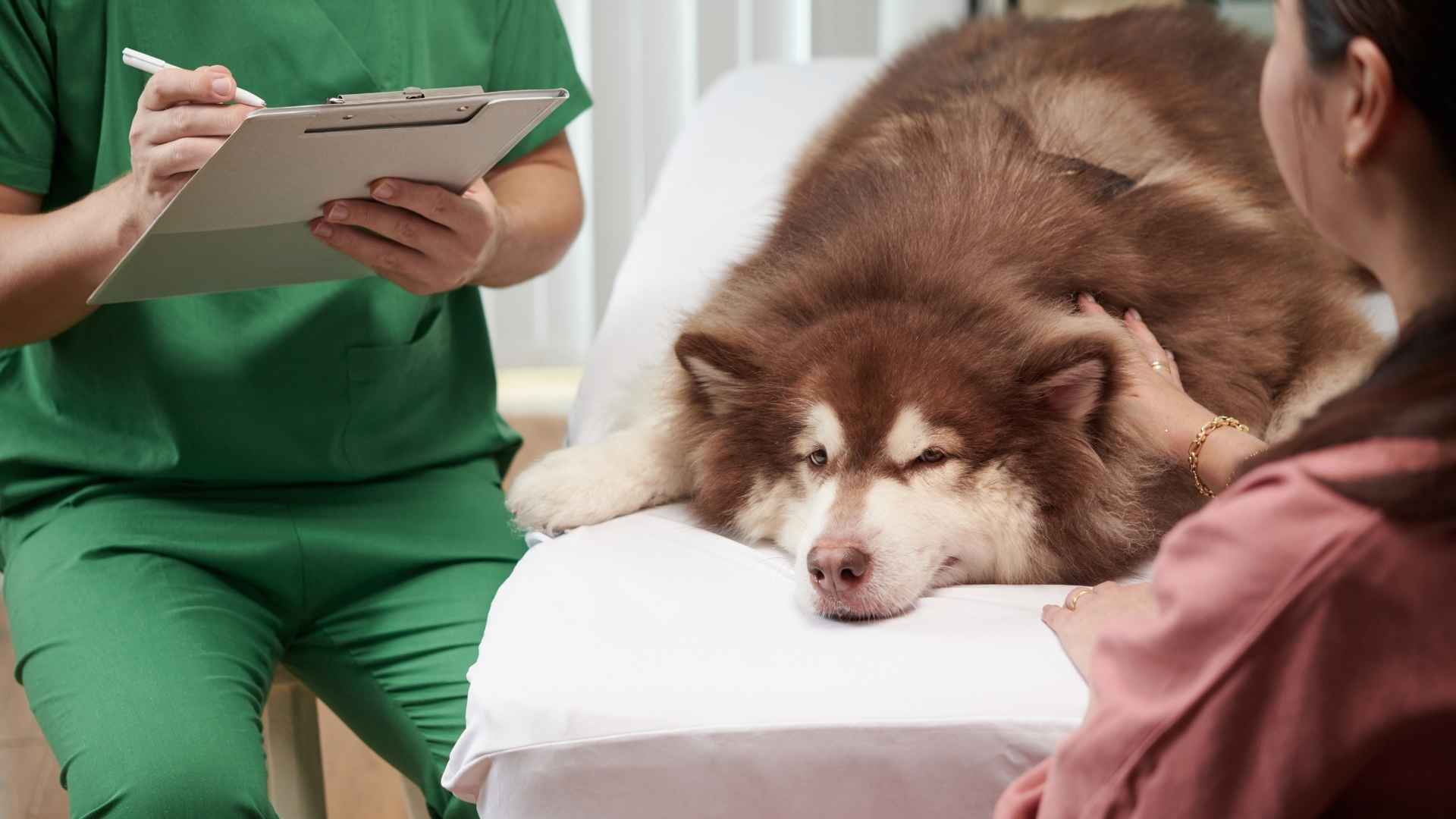Choosing the right dog involves more than picking based on looks or temperament—it also means understanding potential health issues that come with certain breeds. Some of the most popular and lovable dogs are also among the most health-concerned dog breeds, facing chronic conditions that require lifelong care and management.
From breathing problems in flat-faced breeds to joint and heart issues in larger dogs, these health risks can affect both your pet’s comfort and your long-term responsibilities as an owner.
In this article, we explore seven well-known breeds that are prone to medical challenges. By learning what to expect and how to care for them properly, you can give these dogs the happy, supported lives they deserve.
Health Concerned Dog Breeds
1. English Bulldog

Breed Overview
According to the AKC, the English Bulldog is known for its distinctive wrinkled face, broad shoulders, and calm temperament. Despite its sturdy look, it is a gentle, affectionate companion that thrives in relaxed home environments. Its low energy and loyalty make it popular with families and city dwellers alike.
Key Health Concerns
Bulldogs are brachycephalic, meaning they have shortened airways that lead to Brachycephalic Obstructive Airway Syndrome (BOAS). This condition causes snoring, labored breathing, and heat sensitivity, even during moderate activity. Overheating and stress can quickly escalate into medical emergencies.
Another common issue is skin fold dermatitis, caused by moisture getting trapped in the dog’s facial wrinkles. If not cleaned regularly, these folds can become infected and painful. Their short tails and deep tail pockets also require careful hygiene to avoid irritation.
Joint problems like hip dysplasia are frequent, impacting their ability to move comfortably as they age. Bulldogs may also struggle with cherry eye, respiratory infections, and reproductive challenges. Many of these issues appear early and often require surgical or lifelong management.
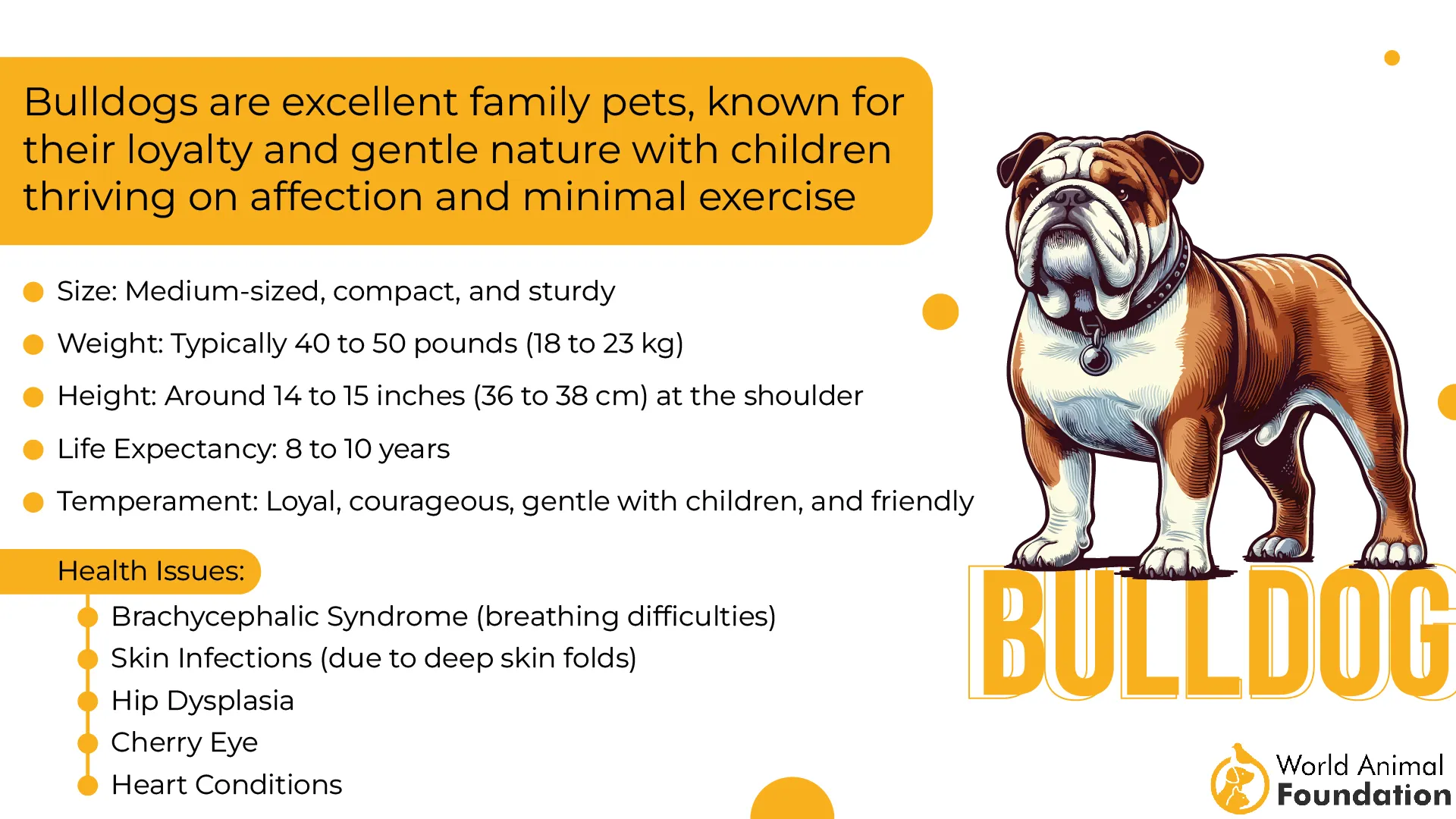
Considerations
Caring for an English Bulldog demands daily cleaning routines, temperature control, and moderate exercise. Regular vet visits are essential to monitor their respiratory and orthopedic health. They do best in homes that understand their physical limits and are ready to support their specific medical needs.
2. German Shepherd
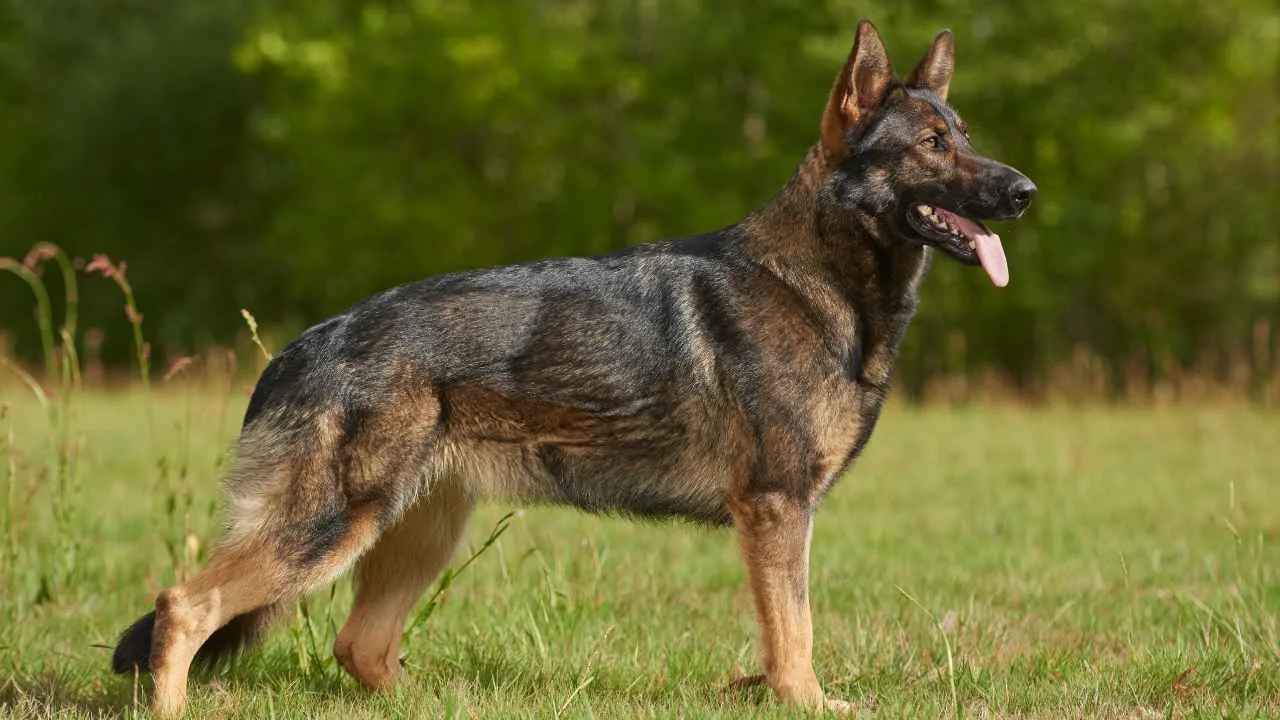
Breed Overview
The German Shepherd is a confident, intelligent breed admired for its loyalty and trainability. It excels in service, security, and family roles, thriving in homes that offer structure and activity. Its protective nature and sharp instincts make it a versatile working dog.
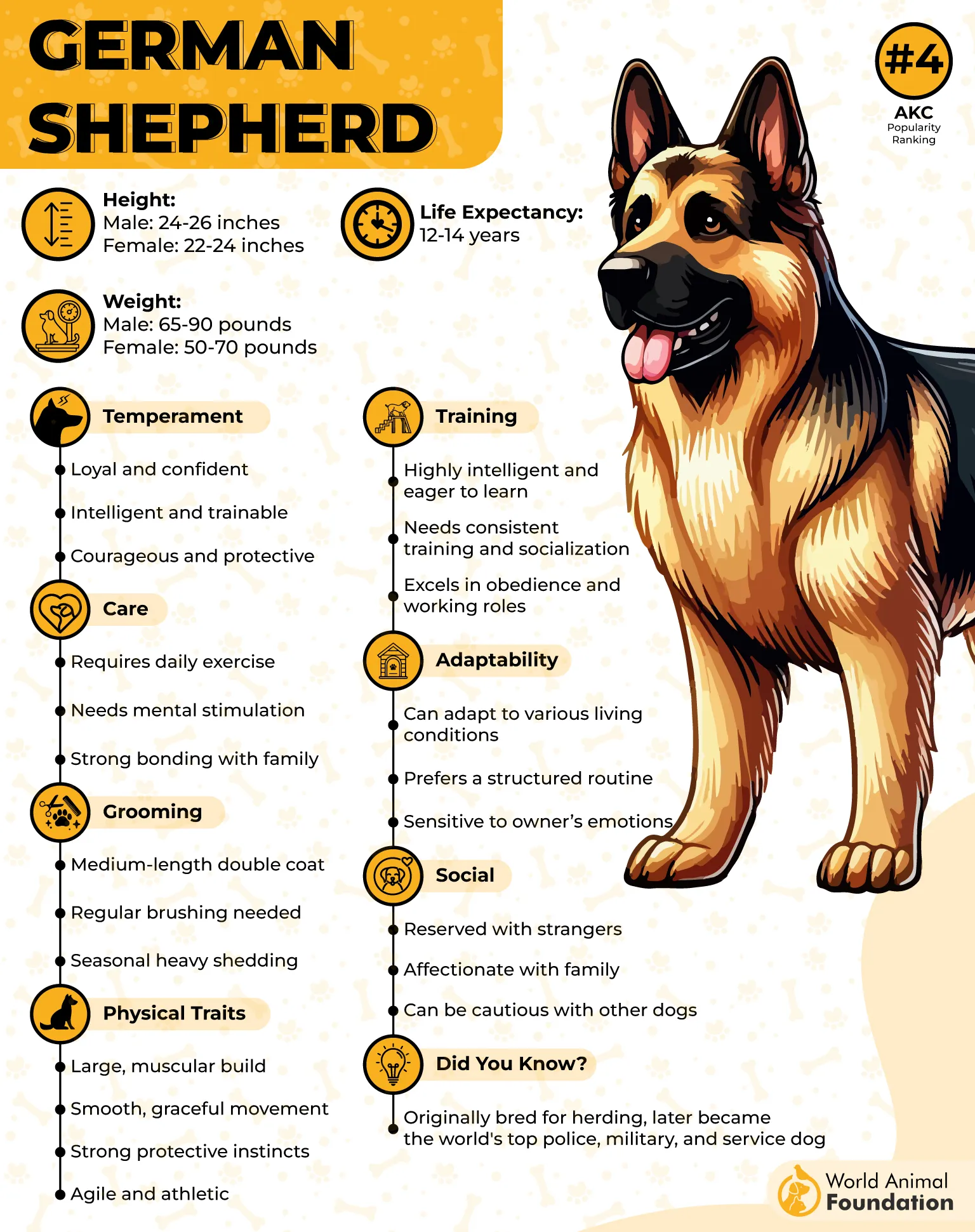
Key Health Concerns
One of the most prevalent health problems is hip and elbow dysplasia, which affects mobility and causes long-term pain. These joint issues are inherited and worsen over time without proper care. Early screening and appropriate exercise are crucial in managing symptoms.
German Shepherds are also prone to degenerative myelopathy, a progressive neurological disorder. It causes weakness in the hind limbs and can eventually lead to paralysis. While there is no cure, physical therapy and support devices may help extend mobility.
Another concern is gastric dilatation-volvulus, or bloat, a life-threatening condition common in deep-chested breeds. The stomach twists and traps gas, cutting off blood flow. This requires immediate emergency intervention and may recur without preventive surgery.
Considerations
To support a German Shepherd’s health, owners must prioritize structured exercise, weight control, and regular checkups. Preventative care—including joint supplements and slow feeding—can reduce risks. This loyal, high-capacity breed does best with experienced owners prepared to manage its long-term physical needs.
3. Pug

Breed Overview
The Pug is a small, affectionate companion known for its wrinkled face, curled tail, and playful personality. Its compact size makes it ideal for apartment living, and its love of people suits social households. Despite its charm, the breed’s body shape contributes to several health concerns.
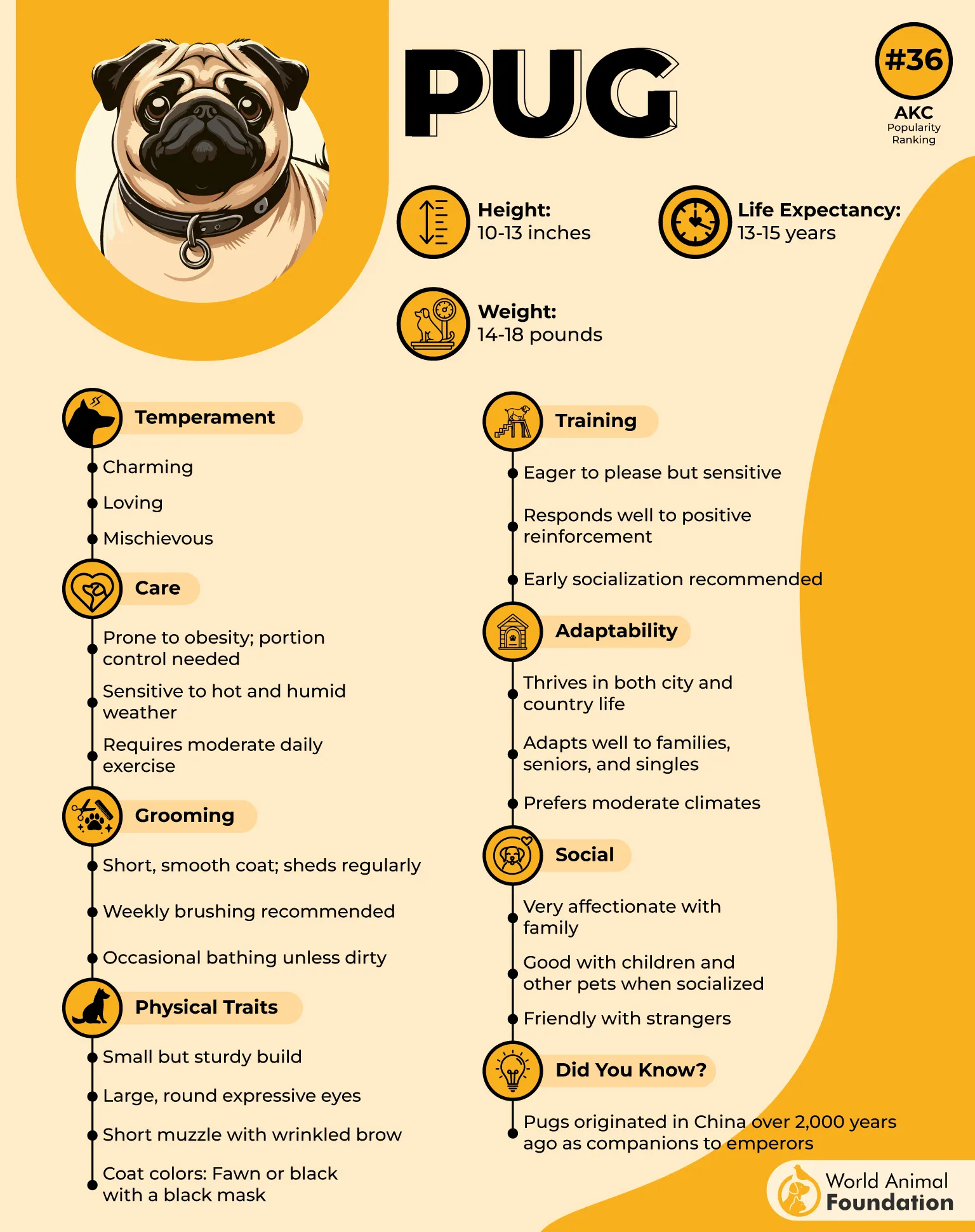
Key Health Concerns
Pugs are severely brachycephalic, which means their flat snouts make breathing difficult. This leads to Brachycephalic Obstructive Airway Syndrome (BOAS), with symptoms like wheezing, snoring, and overheating. Even mild activity or warm weather can become dangerous without close monitoring.
Their large, protruding eyes are vulnerable to injury, including corneal ulcers and dislocation. Eye infections and chronic dryness are common and may require daily treatment. In some cases, vision loss or surgery is necessary.
Obesity is another major concern, as Pugs are prone to weight gain. Extra weight puts pressure on their joints and respiratory system, worsening existing issues. Their diet must be carefully controlled to avoid compounding health risks.
Considerations
Pugs require an indoor lifestyle with minimal exposure to heat or high exertion. Daily eye care, portion-controlled meals, and gentle activity help manage their health. They make loving pets for attentive owners willing to accommodate their unique needs.
4. Boxer

Breed Overview
Britannica states that the Boxer is a lively, affectionate breed with a strong build and expressive face. Known for its playful energy and devotion to family, it thrives in active homes with plenty of interaction. However, Boxers have a shorter average lifespan due to multiple genetic health issues.
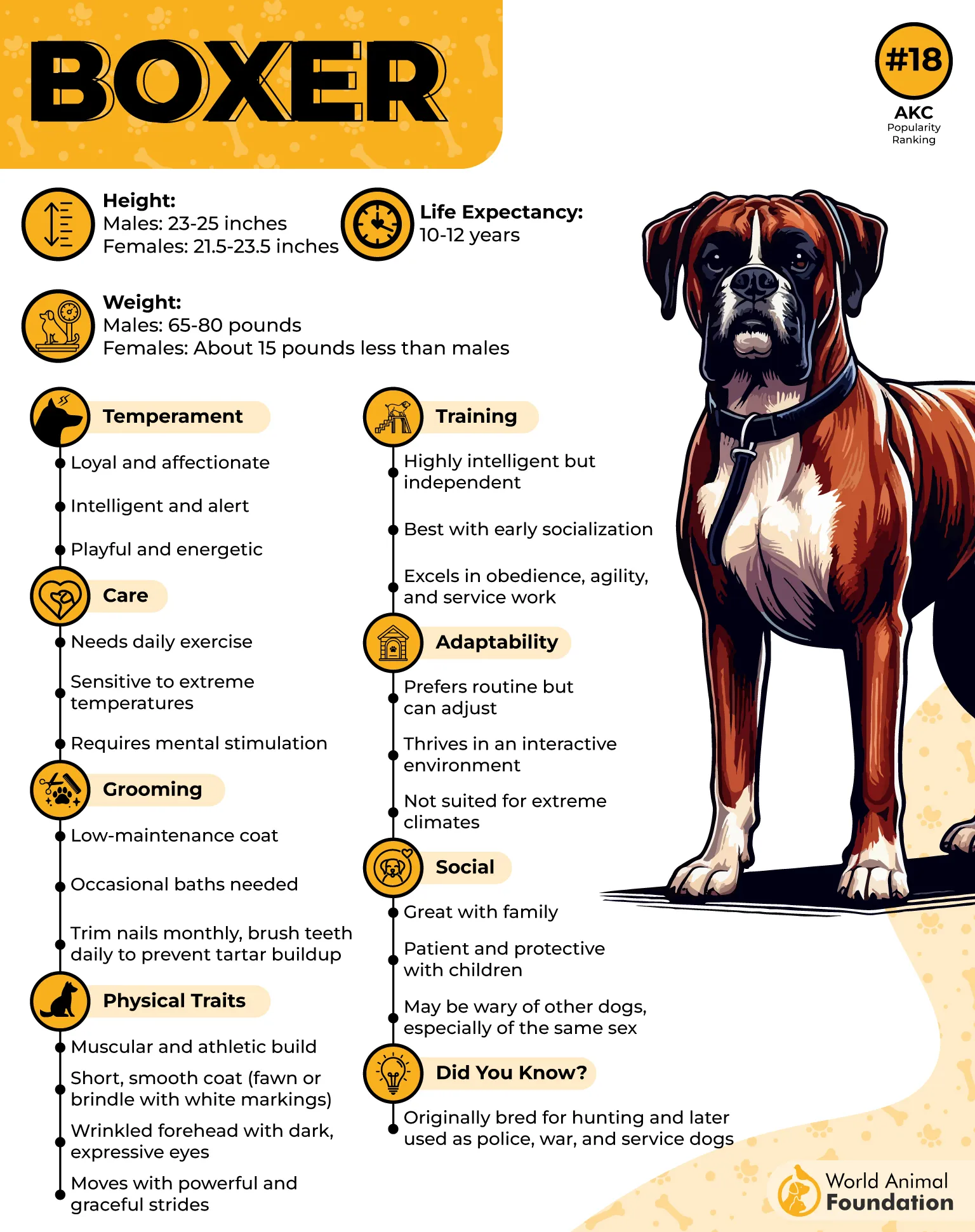
Key Health Concerns
Boxers are at high risk for several cancers, particularly mast cell tumors and lymphoma. These cancers often appear earlier than in other breeds and may progress quickly. Regular screening is crucial for early detection and treatment.
Cardiac conditions, especially Boxer cardiomyopathy, are also common. This disease affects the heart muscle, leading to arrhythmias or even sudden collapse. Many Boxers require lifelong heart medication and frequent monitoring.
Their deep chest makes them susceptible to gastric torsion or bloat, which is life-threatening without immediate care. Preventive surgery and controlled feeding can help reduce the risk. Boxers are also sensitive to heat and should avoid excessive outdoor activity in the summer.
Considerations
Owners should schedule routine cancer and heart screenings and maintain a structured feeding and activity plan. Boxers thrive with moderate exercise and close companionship. Their joyful spirit makes them a rewarding pet for families ready to manage health proactively.
5. French Bulldog

Breed Overview
French Bulldogs are compact, friendly dogs known for their distinctive bat ears and playful demeanor. They’re one of the most popular breeds for urban living thanks to their small size and affectionate personality. While charming, their unique features also contribute to chronic health conditions.
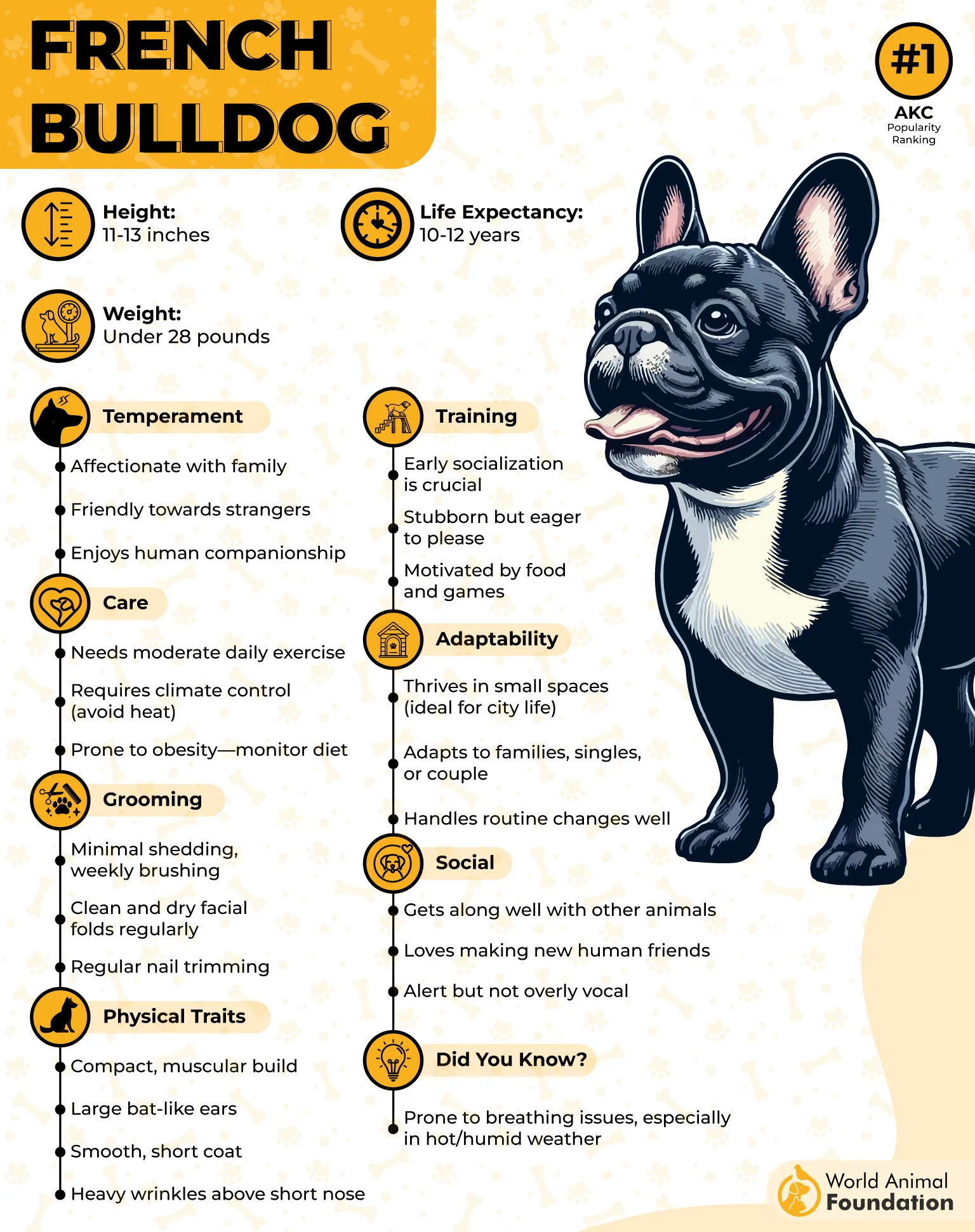
Key Health Concerns
Like other brachycephalic breeds, Frenchies often suffer from BOAS, which causes breathing issues and heat sensitivity. Loud snorting, labored breathing, and exercise intolerance are common signs. These dogs should avoid hot environments and overexertion.
They are also prone to spinal deformities such as hemivertebrae, which may lead to pain or mobility problems. In severe cases, surgery or mobility aids may be required. French Bulldogs also struggle with narrowed nostrils and elongated soft palates.
Skin fold dermatitis is another concern, particularly around the face and tail. Without regular cleaning, infections and irritation can develop quickly. Allergies may also lead to chronic skin and ear issues.
Considerations
French Bulldogs require a cool, low-stress environment and a diligent grooming routine. Owners must be prepared for breathing support and possible corrective surgery. This breed suits calm, attentive households that prioritize gentle care and routine monitoring.
6. Cavalier King Charles Spaniel

Breed Overview
The Cavalier King Charles Spaniel is a gentle, elegant dog beloved for its affectionate personality and beautiful appearance. It thrives on companionship and does well in both quiet homes and family settings. Despite its charm, the breed carries significant health risks.
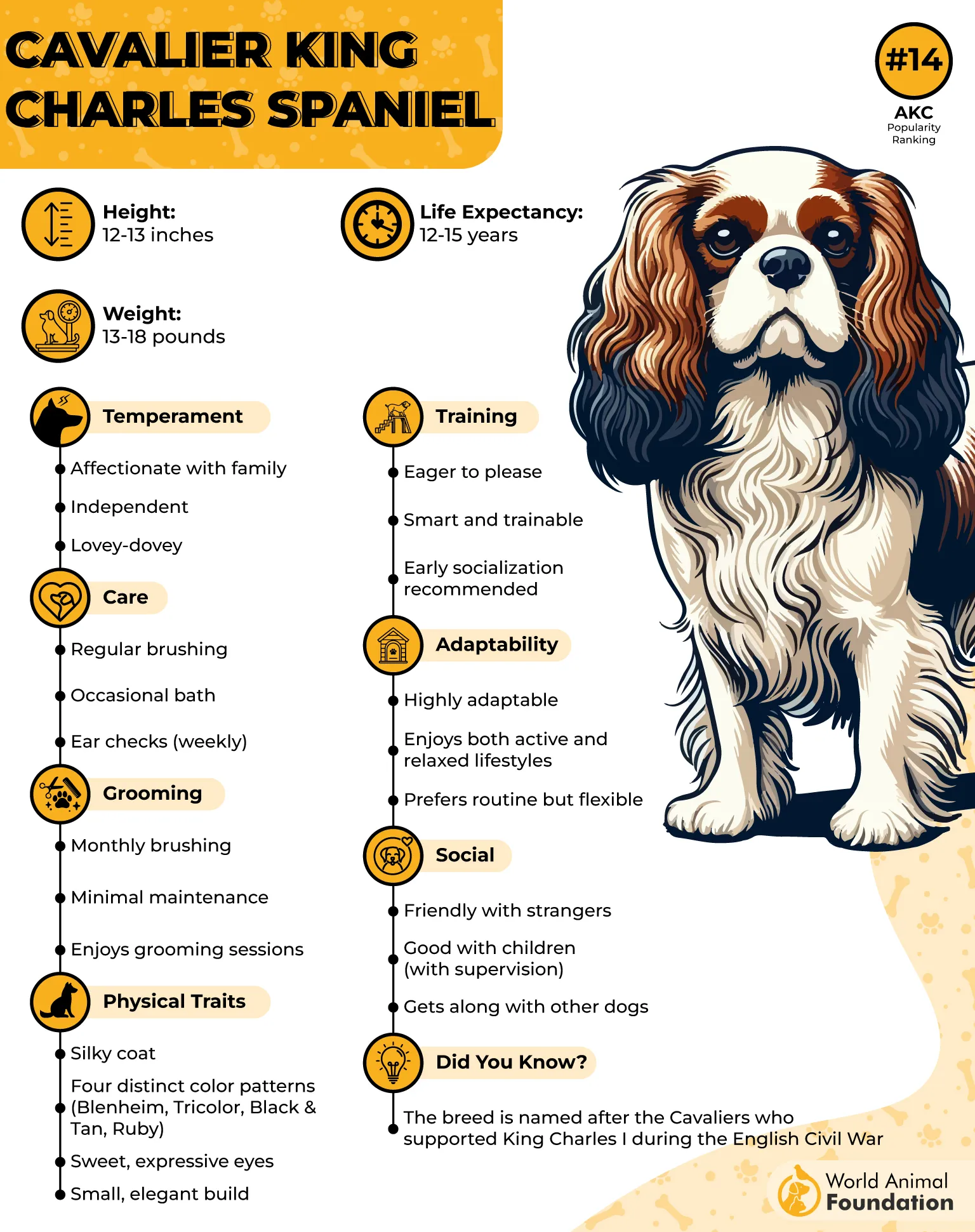
Key Health Concerns
As per PetMD, Mitral valve disease is the most widespread issue in Cavaliers, often developing as early as age five. This heart condition can progress to heart failure without treatment. Regular cardiac evaluations are necessary for early management.
Syringomyelia is another serious concern, caused by skull malformation that leads to fluid buildup around the spinal cord. Symptoms include neck sensitivity, scratching in the air, or even sudden cries of pain. This condition often worsens with age.
Their long, floppy ears are prone to infections, especially in warm or humid conditions. Moisture and debris can easily get trapped, leading to chronic discomfort. Ear care must be part of their regular hygiene routine.
Considerations
Cavalier owners should commit to ongoing veterinary care, especially for heart and neurological health. Regular ear cleaning and attention to changes in behavior are important. These dogs are wonderful companions for gentle homes with time and resources for proper health support.
7. Golden Retriever

Breed Overview
Golden Retrievers are friendly, outgoing, and deeply loyal, making them one of the world’s most beloved family dogs. Their easy temperament and intelligence suit a wide range of households. Unfortunately, this popular breed also faces several notable health challenges.
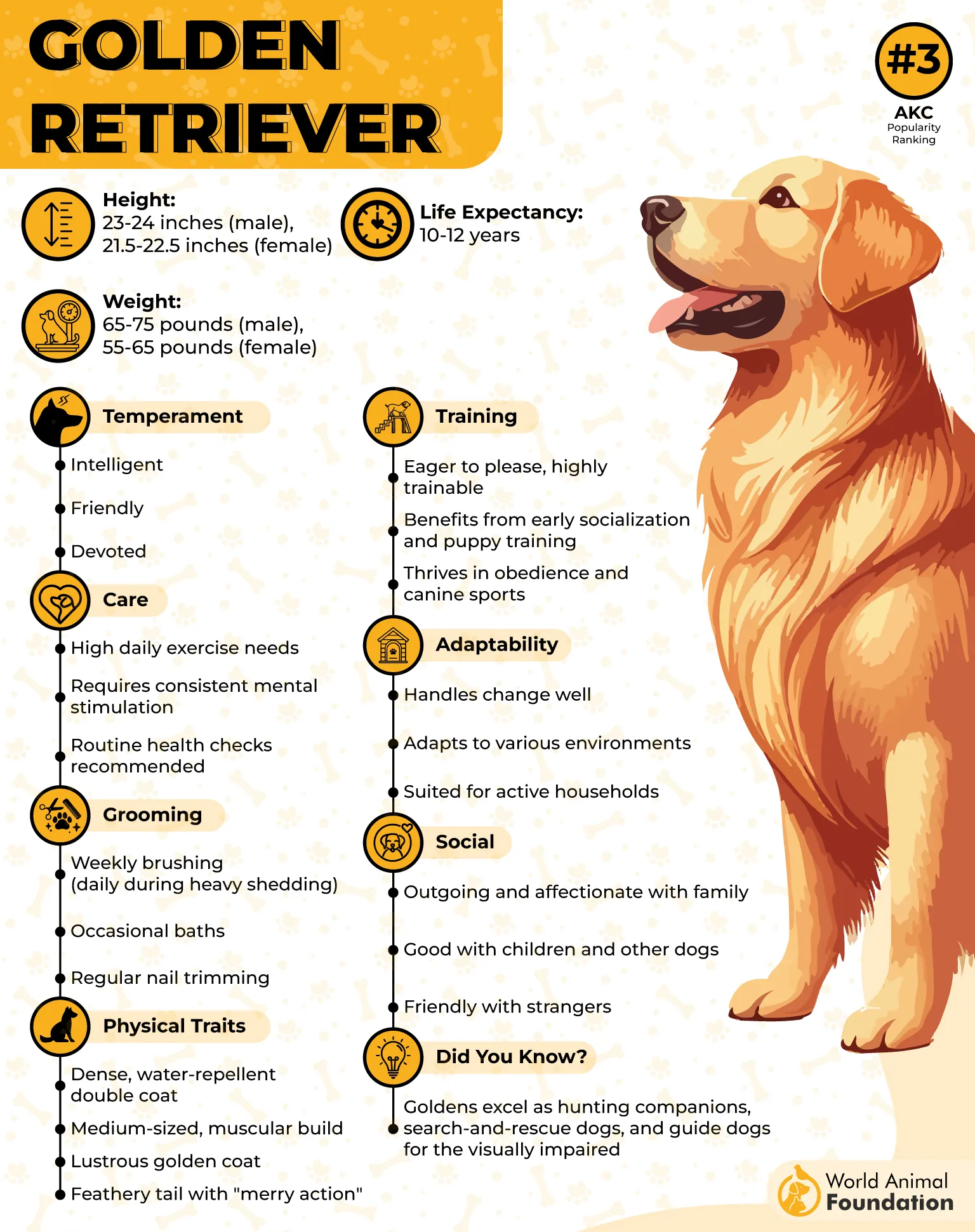
Key Health Concerns
Golden Retrievers have a high rate of cancer, particularly hemangiosarcoma and lymphoma. These cancers are often aggressive and may progress rapidly without early detection. Regular vet checkups and monitoring for lumps are critical.
Joint issues, especially hip and elbow dysplasia, are also prevalent in the breed. These can lead to stiffness, discomfort, and reduced mobility. Golden Retrievers may require lifelong joint supplements and activity adjustments.
They are also prone to allergies and skin conditions, including hotspots and chronic infections. These issues may flare seasonally or persist year-round. Managing their skin involves consistent grooming and, sometimes, prescription treatment.
Considerations
Golden Retrievers need preventive health care and lifestyle adjustments to stay well. Families must be ready for potential long-term treatment and ongoing vet visits. With proper care, they remain loyal, joyful pets that bring years of companionship.
Conclusion
Even the most popular dog breeds can come with hidden health risks, from joint pain to chronic breathing trouble. While many of the conditions covered—like ear infections, urinary tract infections, and skin allergies—may seem manageable, they often signal larger patterns of concern among purebred dogs. These issues are especially common in dogs bred for appearance over function, as confirmed by research and breed histories shared by the American Kennel Club.
That said, it’s not just purebreds that face various dog health issues—some mixed-breed dogs can also inherit medical conditions depending on their lineage. Regardless of breed, maintaining a healthy weight, staying on top of grooming, and scheduling routine vet visits are essential steps toward keeping your dog healthy, especially as they transition into older dogs. Preventive care is key.
If long-term health is your top priority, looking into the healthiest dog breeds, such as the Australian Cattle Dog, may be a wise starting point. But no matter which dog you choose, awareness and proactive care make all the difference. After all, understanding dog health issues is just another way to love your companion well.


